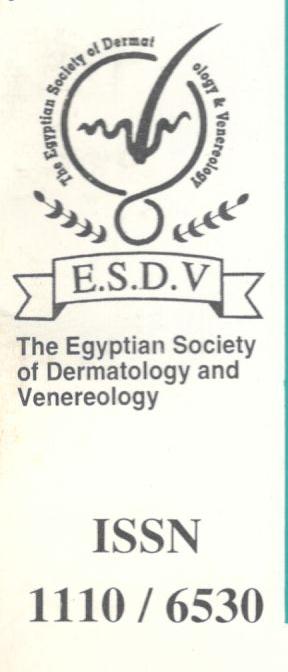Background: Pityriasis rosea is an acute, self-limiting papulosquamous skin disease .T-helper lymphocytes play an important role in the pathogenesis of PR. However, the role of cytotoxic T-lymphocytes is poorly understood.
Objective: To investigate the immune profile of mixed inflammatory cell infiltrate in skin lesions with PR.
Methods: The study included 10 biopsy specimens from lesional skin with clinical diagnosis of PR. Ten biopsy specimens from normal skin served as a control. Monoclonal antibodies were used for targeting antigenic epitopes on several cell types including: CD3 (for T-cells), CD20 (for B-cells), CD6s (for macrophage/dendritic cells), and
Results: Levels of CD3 +ve, CD68 and Gr B Granzyme B (Gr B) (for active cytotoxic T-cells)
were significantly higher in lesional skin as compared to normal skin (p<0.05). CD3 +ve cells
was the predominant cell population in lesional skin
Conclusion: The finding of significantly increased numbers of CD3 +ve cells in skin lesions with PR indicates an important role of cell mediated immunity in the pathogenesis of the disease. A significantly increased number of Gr B +ve cells in all lesions suggested that a fraction ofCD3+ve cells have an active cytotoxic potential
.


